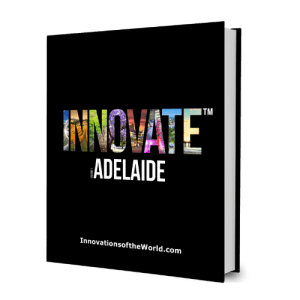With expertise in engineering, the cognitive sciences, and anthropology, I delight in looking at innovation from both a technological and a human perspective, and am fascinated by the intricacies of the process, and how two aspects greatly impact its scope and quality. One is the benefit of deeply understanding the unique advantages that both humans and technologies bring to the table, and the other is the importance of the question or goal around which we innovate.
From the human perspective, connection is critical to enabling that mix of slow hunches and “aha” moments that occur at both individual and joint level, and builds the bricolage of diverse knowledge, experience and thoughts that come together over time to create a new idea. This connection is created by collaboration – both within the brain (intrabrain synchronization) and between brains (inter-brain synchronization) as people synchronize via gaze, voice, touch, movement, and electrochemical exchange. The impact on how we think, feel, heal, solve problems, bond and care is immense, and a deeper knowledge of it offers vastly untouched opportunities for innovation. It sparks creative abstraction, a wonderful cognitive state that allows the brain to wander, disconnect, and create new connections between information and ideas.
It also aligns perspectives towards a wider, more complex approach to the problem to be solved or question to be answered as people create new ideas, concepts, and technologies.
The wonderful resource of human abstraction’ is increasingly coupled with technology, and when the partnership is a good one innovation flourishes. The distraction of technology can block abstraction, but when used as an enabler it gives us access to vast amounts of information, can facilitate connection and collaboration, and enables us to realise our ideas. As an engineer, I delight in what it can achieve, whether automating for human safety, assistance, or relief; enabling smart manufacturing; or building remarkable biotech and medical solutions.
Just a Quick Note:
InnovationsOfTheWorld.com has partnered with Trade License Zone (TLZ) to support global innovators looking to expand internationally. Take advantage of the UAE’s Free Zones—enjoy streamlined setup, low corporate taxes, and a strategic gateway to the Middle East and beyond.
Get Your UAE Free Zone License Fast & Easy!My work in the neurophysiology of interaction (human-to-human, and human-to-technology) is fascinating, and helps to clarify the unique advantages both offer, and how to combine them. The results spark new ways to imagine, design and deploy technology; clarify when (and why) humans offer a superior solution; and decipher how to partner humans and technology for truly beneficial outcomes.
Such understanding drives innovation towards quality, long-lens solutions that are human-centric rather than short term, simple goals of profit and attention. It highlights the importance of understanding that our question or goal shapes our innovative path. The good news is that I consistently see quality goals producing cleverer innovative solutions, rather than a quick fix. It pushes us to stay at the forefront of new knowledge; leverage breakthroughs, surprises, and benefits; identify drawbacks and also to understand what not to technologize.
But we have to choose this as our innovative purpose. Do we want to spend our prodigious innovative capacity building quality-based human-tech partnerships for a future that maximises the unique benefits of both and allows each to flourish?
I know I do.















